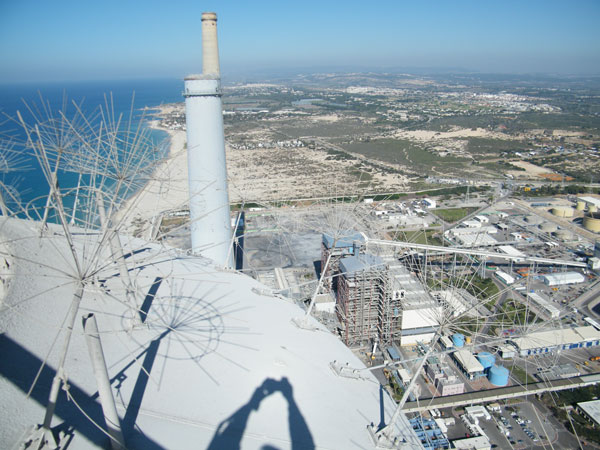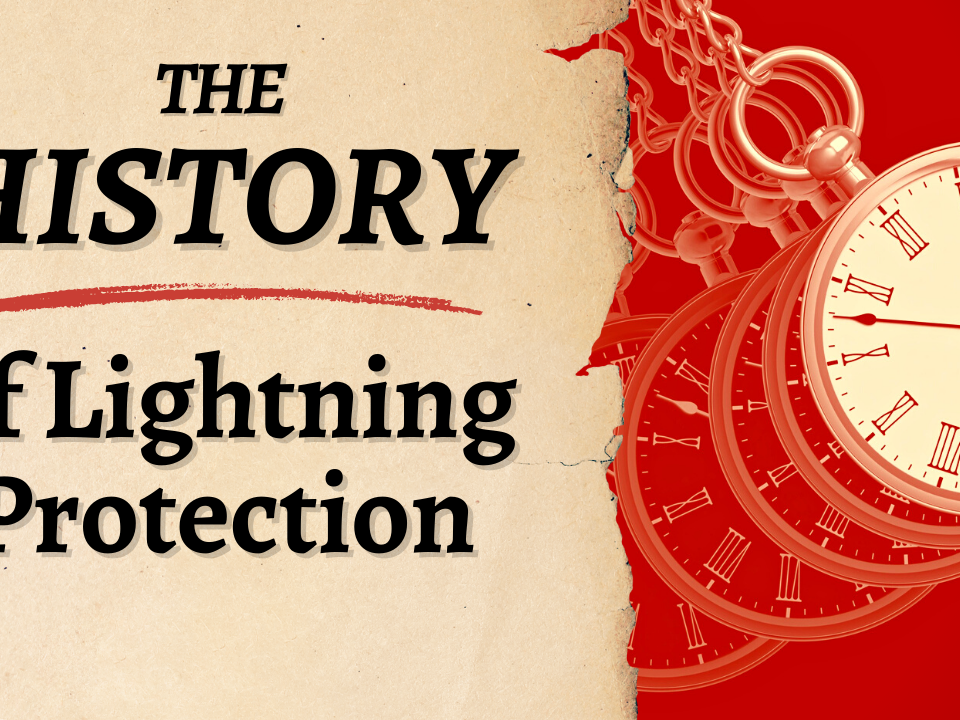- 100% AMERICAN MADE
- Lightning Protection - YOUR time, NOT Downtime

Lightning Protection: Beware the Bolt
September 25, 2014
Lightning Protection: Offshore Ain’t Immune!
October 16, 2014Lightning Protection: Operations Down! Power Off!

Lightning Protection Blog
Week 98 | October 9, 2014 | Lightning protection
Each year a multitude of Power Plants, Utilities and Energy producing facilities are knocked off-line due to lightning. But many of you know this, because you suffer the consequences. What is less known is that on that bright and sunshiny day, when the power goes out, it can also be due to lightning, which boggles some folk’s minds!
Sure, the general population at large expects the clap of thunder, then the bolt and power goes off. But why would a lightning strike from a few weeks back have anything to do with loss of power on a sunny day? There are even times when the management of companies who provide your power is left scratching their heads. People don’t realize that not only are there are primary effects of a lightning strike (like the bolt) but secondary effects as well. Each time a bolt hits, the electrical current is carried through to ground, through the wires and into the equipment and sensitive electronics of the facility. Each time this happens, degradation occurs and the life of that item is shortened. The same is true at your home. Did you ever wonder why the toaster you meant to last 5 years just stopped working? Well, it could be that lightning strike from last summer.
This occurrence is called meantime-between-failure and it can be extremely costly to Power and Energy providing companies as well as their customers. Therefore it is important for these entities to have lightning protection, and to create a thorough and comprehensive solution which combines Lightning Protection, with grounding engineering, as well as appropriate surge solutions.
In order to do this properly, power and energy providers should not only install lightning protection systems but implement a full and extensive lightning risk mitigation plan, which begins with assessment, perhaps testing, in addition to a customized design unique to the facility, followed by proper installation, and continual maintenance and inspection. This approach can save companies and customer millions of dollars in the long run.
Power Providers and Lightning
Lightning protection performs an important and imperative function in the Power Generation Industry, helping energy companies avoid the downtime and restoration costs that come with outages. A single outage lasting 1 hour can cost upward of $1 Million not only to the company, but to its customers depending on the users that are serviced. But sometimes, the initial choice of a lightning protection solution can become the problem when outside or unknown influences are factored in. Weather, particularly lightning is one of the biggest threats to facilities of this type all over the world. Several companies have found that traditional lightning protection tends to create more issues than solutions and have opted to implement a solution based on charge transfer technology. Whether it is a Nuclear Power Facility such as Browns Ferry or substations, much like those operated at EPB and/or a cooperative, such as Tri-State Generation and Transmission Association the usual suspects, like lightning rods and overhead grounding wires do not do the job. They need assurances and have found that a customized approach tailored to meet their unique set of circumstance is preferable than the standard approach.
“When utilities or power generation facilities experience adverse operational events and are subsequently knocked offline the cost can be devastating, resulting in the ultimate consequence of death, and/or the potential cost impact to customers ranging from thousands of dollars to millions, depending on location and the customers who are impacted.”

Lightning storms in California strike Southern California Edison (SCE)-curtesy of the Daily Mail
The Risk of a Lightning Strike to Power and Energy Across the Grid
According to the DOE one report references the following:
Cost to the end-user for momentary outages (costs are per customer) to be as follows:
- Residential – $1.82
- Commercial – $574
- Industrial – $1895
Therefore, for a load serving station that serves 20 MW of load (or 2800 to 4000 residential customers/meters), the cost impact to end-users of losing service is in the range of $5096 to $7280. This is a momentary outage and does not take into account a specialized industrial process that would be impacted, one statement from a high tech manufacturing group mentioned $1,000,000 an outage.
Lightning Protection Solutions
Offering a variety of hands-on services including testing much like Smart Ground, and proprietary site surveys and design provided by engineers and coupled with lightning strike prevention products such as the Dissipation Array® System (DAS®), in concert with grounding engineering like the Chem-Rod® and optimized with surge suppression solutions, creates an environment which is safe and event free enabling companies to save millions of dollars each year and provide their customers with a product void of downtime and power they can rely on.
The direct opposite of grounding wires and/or lightning rods DAS uses a different, innovative, method of operation compared to both. While grounding wires are meant to re-direct an incoming lightning strike’s energy to the ground, away from equipment, the damaging secondary effects of the strike are still experienced. A lightning rod collects the strike and carries the current into the ground as well, creating the same effect. DAS uses “charge transfer” technology, which prevents the termination of lightning within the area of desired protection altogether. The technology is so effective, the DAS has over a 99% success rate and is the only lightning protection product to offer a full no-strike warranty.
It is important to first assess the situation, and then design the right solution for each facility. A cookie cutter approach with not work because each facility is unique. Once the proper lightning protection system is in place including grounding engineering and surge protection, maintenance and inspection are integral protecting your facility and keeping it protected
Lightning Strike Collection vs. Prevention
Ensuring maximum power quality, power reliability and asset protection is important to power providers. DAS’s charge transfer technology is the only type of system where the lightning impulse is not encouraged, but discouraged. DAS completely isolates facilities from a direct lightning strike by bleeding off the induced charge on the protected area during the course of a thunderstorm, reducing it to a much lower level in relationship to the surrounding environment. This suppresses the formation of an upward rising streamer, one of the required elements of the strike process, thus avoiding the strike. Discouraging lightning is a significant benefit to facilities of this type. To read more in our white paper Collection vs. Prevention
If you have any lightning stories you would like to share with us, positive or negative and/or if you have any questions or need additional information please feel free to contact me at LightningDiva@lecglobal.com
Be careful out there! Visit www.lightningprotection.com for all your lightning protection needs. Follow us on Twitter, Facebook and LinkedIn for more information and updates as well as some great photos. Thank you for visiting!

